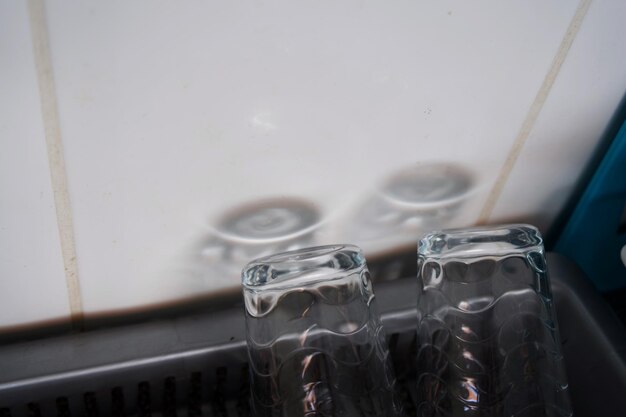Why Is There Water Pooling in the Bottom of My Refrigerator?
Have you ever opened your fridge to find an unwelcome puddle at the bottom? If so, you are not alone. Seeing water in your refrigerator isn’t just a nuisance—it can also be an indicator of a larger problem needing attention. In this guide, we’ll explore the various reasons water may collect inside your refrigerator, the preventive measures you can take, and what steps you might need to remedy the situation.
Common Causes of Water in the Refrigerator
1. Clogged Defrost Drain
The most typical reason for water at the bottom of your refrigerator is a clogged defrost drain. Over time, this drain can become blocked with food particles, ice, or other debris. When this happens, the water that is supposed to travel through the drain cannot escape and instead pools at the bottom of the fridge.
How to Identify
- Notice puddles of water forming periodically.
- Increased humidity inside the fridge.
- Ice buildup near the drain.
What to Do
To resolve this issue, you can try clearing the clog yourself:
- Unplug the Refrigerator: Safety first—always disconnect power before investigating internal issues.
- Locate the Drain Tube: This is usually found at the back of the fridge at the bottom.
- Clear the Drain: Use warm water to dissolve ice and remove debris. A flexible piece of thin wire or a pipe cleaner can help to dislodge any blockages.
2. Faulty Door Gaskets
A faulty door gasket can allow cold air to escape, leading to condensation. If the gasket is cracked or not sealing properly, this could result in water buildup.
How to Identify
- The fridge constantly feels warmer than usual.
- Higher electricity bills due to loss of cool air.
- Visible cracks or loose gaskets.
What to Do
- Inspect the Gaskets: Look for visible signs of wear.
- Clean the Gaskets: Sometimes simple cleaning can improve their grip.
- Replace if Necessary: If damage is noticeable, consider replacing the gaskets to maintain efficiency.
3. Humidity Control Issues
Fluctuations in humidity within the refrigerator can result in excessive condensation. If your fridge does not have adequate humidity control, it can result in water accumulation.
How to Identify
- Frequent opening and closing of the fridge causing moisture build-up.
- Location of the fridge in a high humidity area.
What to Do
- Adjust Usage: Limit how often and how long the refrigerator door is open.
- Move Refrigerator: If possible, relocate it to a less humid environment.
- Adjust Humidity Control Functions: Use settings provided in newer models to manage humidity levels efficiently.
Additional Considerations
Installation Issues
Incorrect installation of the refrigerator can lead to water collecting in unwanted areas.
How to Identify
- Uneven leveling of the appliance.
- Constant tilting or wobbling of the fridge.
What to Do
- Check Leveling: Ensure that the refrigerator is perfectly level.
- Correct Positioning: If it isn’t level, adjust the legs or position until it stands firm.
Internal Leaks
Sometimes, an internal leak from the fridge's water supply may be the culprit.
How to Identify
- Water pooling even when the rest of the fridge checks out.
- Moisture near the water filter area if your fridge has a built-in water or ice dispenser.
What to Do
- Inspect Water Lines: Look for loose connections or cracks.
- Consult a Professional: If leaks persist, it might be necessary to get professional help.
A Guide to Preventing Water Accumulation
1. Regular Maintenance
- Defrosting: Regularly defrost the refrigerator to prevent blockages.
- Cleanliness: Keep interior shelves, drawers, doors, and seals clean.
2. Proper Usage
- Organize Contents: Ensure airflow is not obstructed inside the fridge.
- Monitor Temperatures: Maintain optimal temperatures (usually around 37°F for the fridge and 0°F for the freezer).
3. Replacement and Repairs
- Component Check: Regularly inspect parts of the fridge for wear and tear.
- Timely Repairs: Address any issues immediately before they escalate.
4. Environmental Control
- Location: Keep the fridge out of direct sunlight and moisture-prone areas to minimize humidity variances.
📝 Summary of Key Takeaways
- 🔍 Regular Inspections: Regularly check both interior and exterior elements of the fridge to catch issues early.
- 🔧 DIY Solutions: Many common issues can be resolved with straightforward cleaning and maintenance efforts.
- 💡 Optimize Environment: Place and use the refrigerator in optimal conditions to prevent unnecessary wear.
- 🛠️ Professional Help: Do not hesitate to contact a professional, especially in the case of persistent leaks or complex mechanical issues.
Water collected at the bottom of the refrigerator can be a minor inconvenience or an indication of a larger issue. By understanding these potential causes and taking proactive measures, you can ensure your refrigerator runs smoothly, all while preventing water buildup and extending the life of your appliance. Remember, a little maintenance goes a long way!
